Vol.3
Tamagawa Pipe
Scroll Down
The day of interviewing 11.13.2024
Last update 1.??.2025
Hello!
Hello! This is Craftman Story Vol.3. We visited Tamagawa Pipe. During our interview of Tamagawa Pipe, we were able to observe their drawn steel pipe operations and hear from CEO Tamagawa.
Tamagawa Pipe is located one stop from Keikyu Kamata Station, a 10-minute walk from Zoshiki Station. It is situated along a metropolitan road lined with apartment buildings and traditional factories. Founded in 1959, the company is now led by CEO Tamagawa, the fourth-generation owner who inherited the factory from his predecessor. The company is good at "drawn steel pipes", processing iron pipes manufactured by major manufacturers into special sizes, with about 10 skilled craftsmen showcasing their expertise.
Tamagawa Pipe Website : https://tamagawa-pipe.com/
photo#1 : Inside the factory
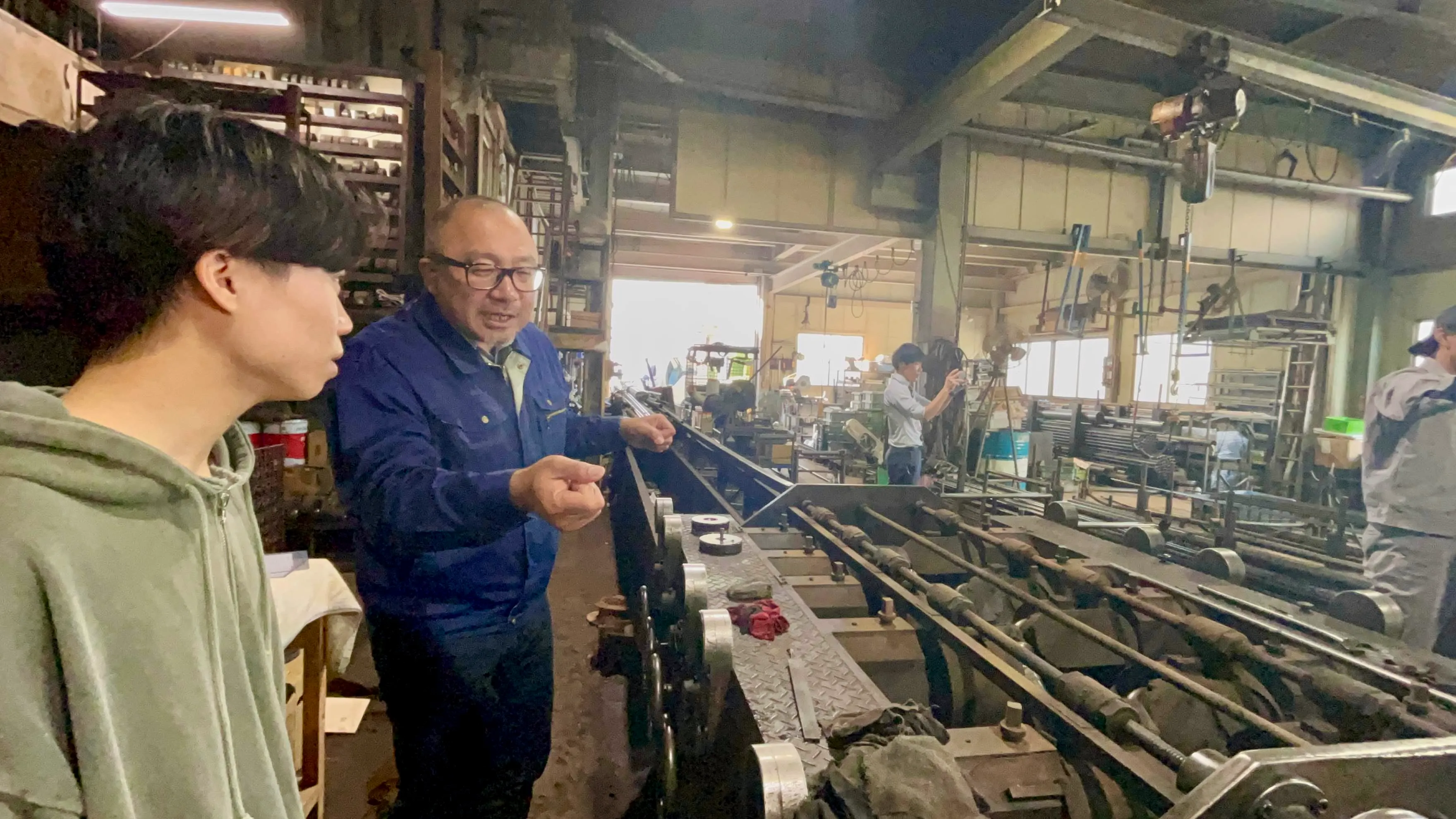
We interviewed the craftmen did the work of drawn steel pipes. In the video below, we introduce the work, so please watch the video below.
(The explanation below is same as the video above.)
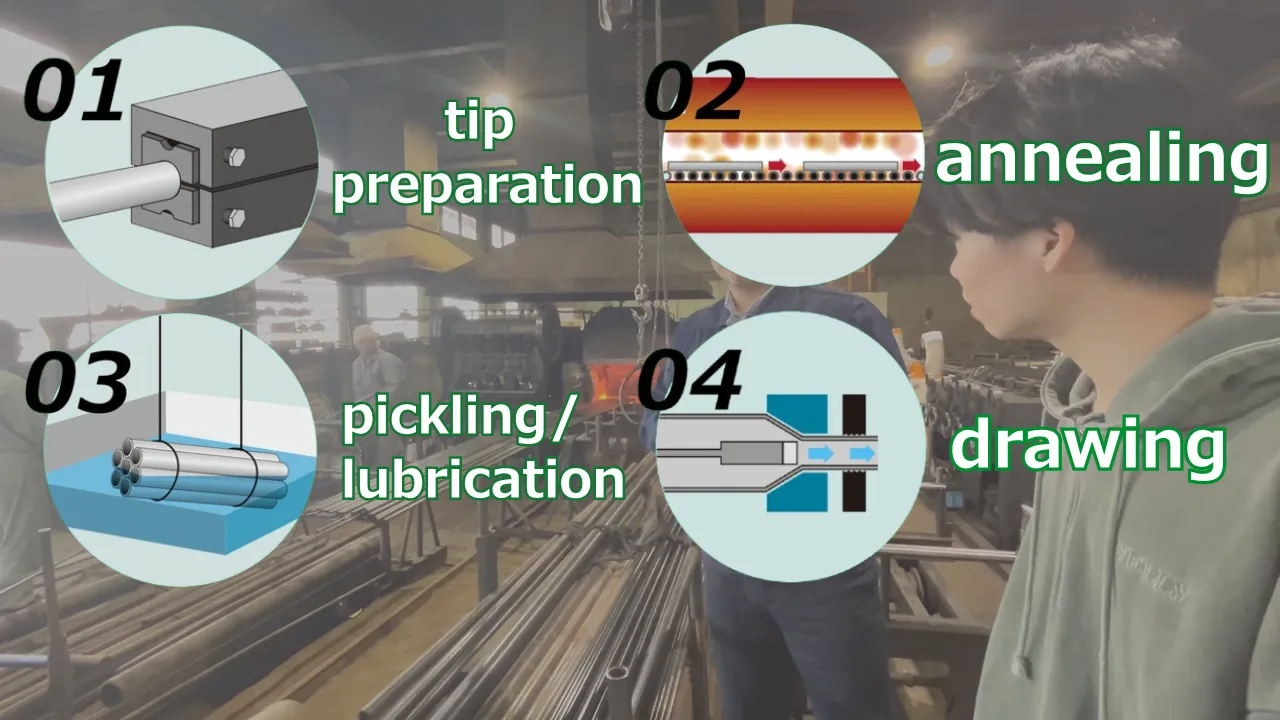
A drawn steel pipe is a processing method that allows steel pipes to be stretched and their diameter to be freely adjusted. Typically, major manufacturers produce pipes in specific sizes based on set standards. By using drawn steel pipes, these pipes can be adjusted to precise sizes according to their intended use.
Tamagawa Pipe's drawn steel pipe process consists of four major steps: tip preparation, annealing, pickling/lubrication, and drawing.
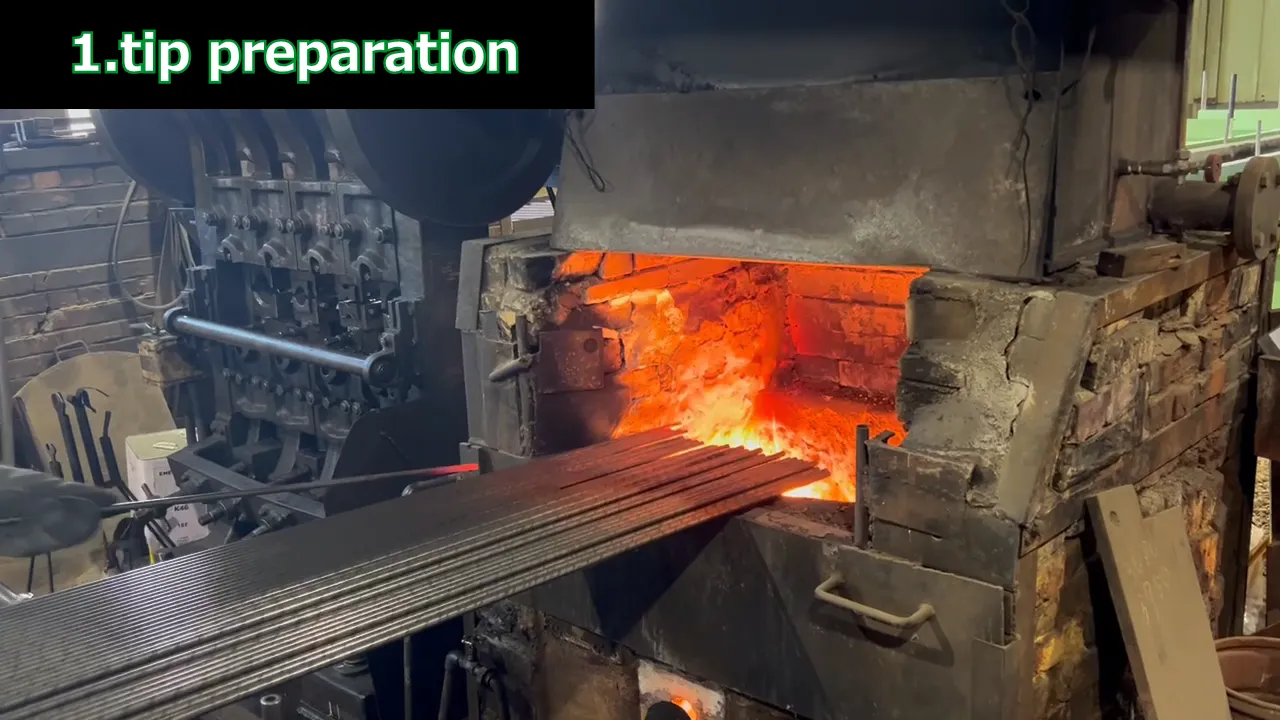
First is tip preparation. This process involves adjusting the diameter of only the pipe's tip. The tip is heated in a furnace to soften the pipe, then passed through a die of predetermined size to adjust its diameter. Since each pipe has its own characteristics, determining the appropriate heating time by observing the pipe's color is where craftsmen demonstrate their expertise.
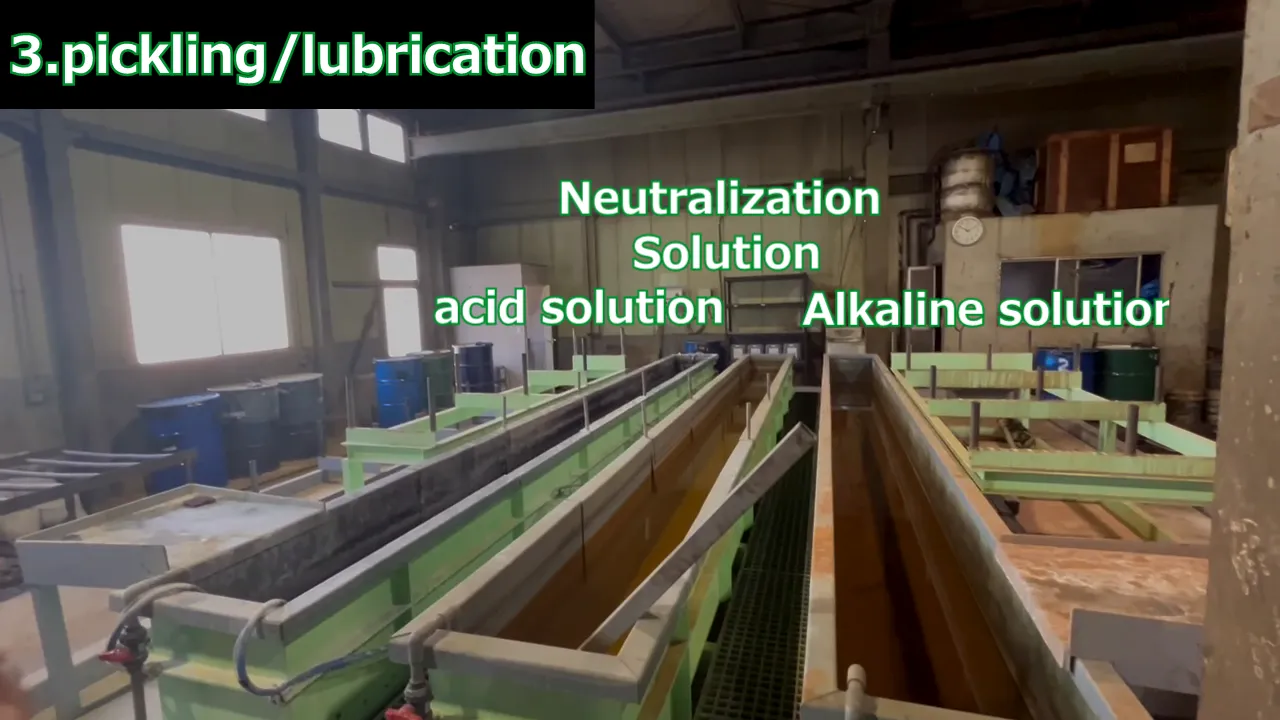
Next is annealing. In this process, the entire pipe is heated to high temperatures to facilitate the subsequent drawing process.
Then comes pickling and lubrication. The black soot (scale) that adheres during the annealing process is removed with an acidic solution and neutralized with an alkaline solution. Afterward, lubricating oil is applied to the entire pipe in preparation for the drawing process.
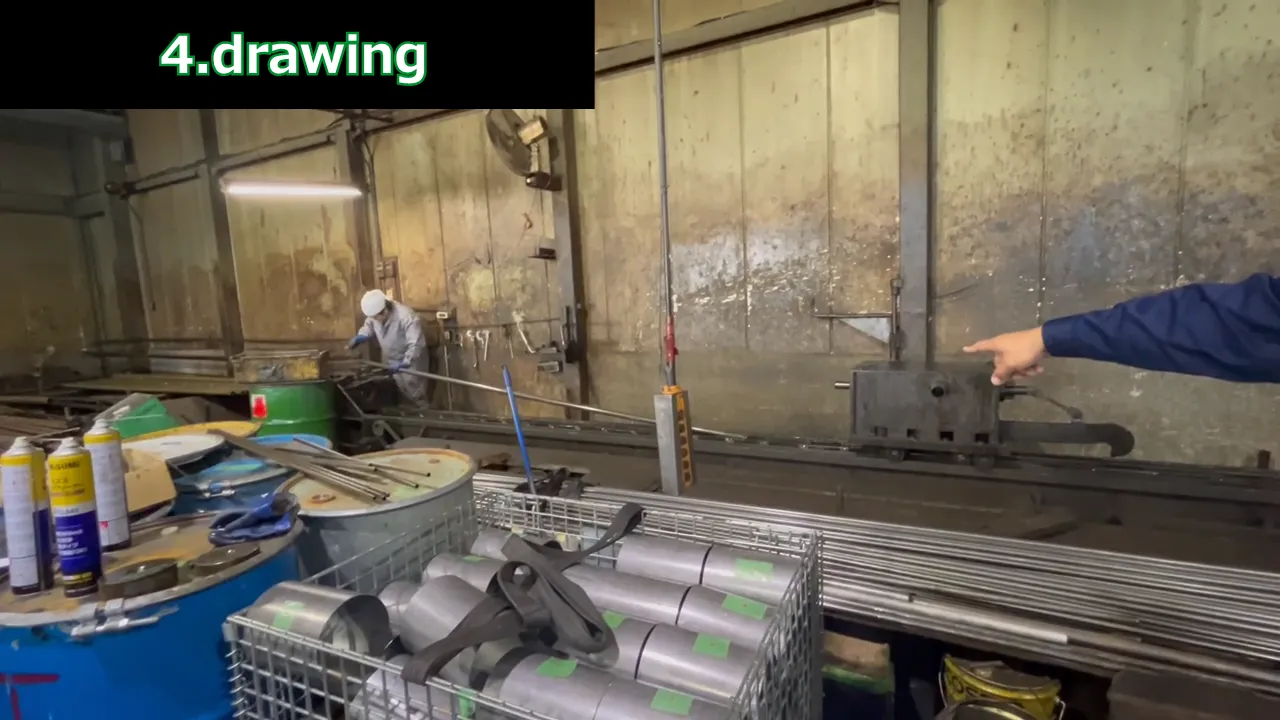
Finally, there's the drawing process. Using the adjusted tip as an anchor point, the pipe is pulled through a die in one swift mechanical operation. This creates a pipe with uniform diameter throughout. Due to the high level of technical skill required, this task is handled by experienced craftsmen.
These diameter-adjusted pipes are then welded and processed at other local factories in Ota Ward, ultimately becoming various products, including parts for heavy machinery such as cranes.
Tamagawa Pipe carries an important role as an intermediate processor, working in cooperation with major manufacturers and neighboring factories.
We have four surprising points at the interview of Tamagawa Pipe.
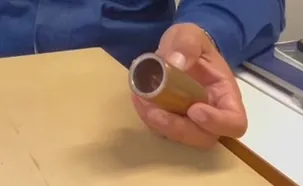
Tamagawa Pipe's strength lies in its flexible manufacturing system, made possible precisely because of its small scale. Leveraging this flexibility, Tamagawa Pipe is working on developing multi-layer structural materials. These materials combine multiple metals - the photo shows an example combining iron and copper. Iron has the characteristics of being low-cost and easy to process, while copper has excellent electrical conductivity. Multi-layer structural materials can take advantage of both these benefits. These multi-layer materials are being used in Linear Shinkansen tunnels. While tunnels require grounding equipment to discharge electricity, they also need to connect multiple pipes, demanding both processability and conductivity. Multi-layer structural materials that meet these requirements are the optimal choice.
photo#6 : multi-layer structural materials
CEO Tamagawa emphasized that the most important thing in work is to build a “three-way satisfaction” relationship where customers, partners, and ourselves all benefit. “It’s important to value our customers, but it’s even more important to value our partners,” he said. CEO Tamagawa learned from his predecessor that it is the partners who add value to what we create, and if we do not value them, we will lose our work.
The impression interviewing team had was that the small factories in Ota Ward cooperate with each other, sharing the work they can do and supporting each other, and CEO Tamagawa’s story perfectly aligns with this.
For example, while Tamagawa Pipe excels in processing steel pipes, they also collaborate with other companies to meet various customer needs for different materials, such as aluminum pipes.
Utilizing the Ota Ward small factory network, Tamagawa Pipe continues to operate today.
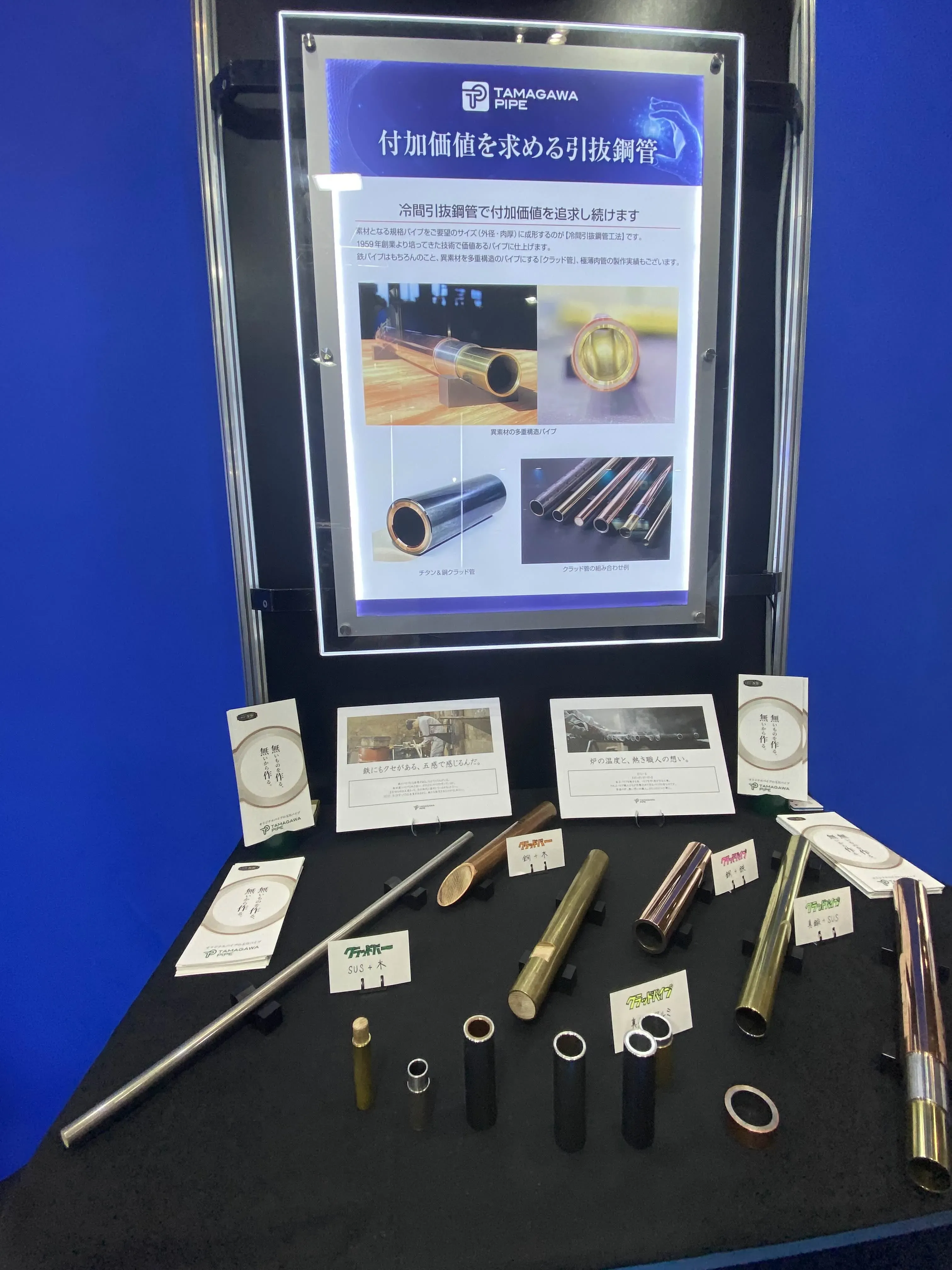
Tamagawa Pipe actively disseminates information. CEO Tamagawa believes that simply possessing technology is not enough; it must be shared. He undertakes various initiatives to do so. For example, he placed a sample of a multi-layered material made of metal pipes and wood, which he thought would be interesting, at a customer’s company. This led to a discussion about creating a new multi-layered material. Additionally, Tamagawa Pipe participates in activities such as exhibiting at Techno Frontier and other exhibitions organized by the Ota Ward Industrial Promotion Association.
photo#7 : The booth of Tamagawa Pipe at Techno Frontier
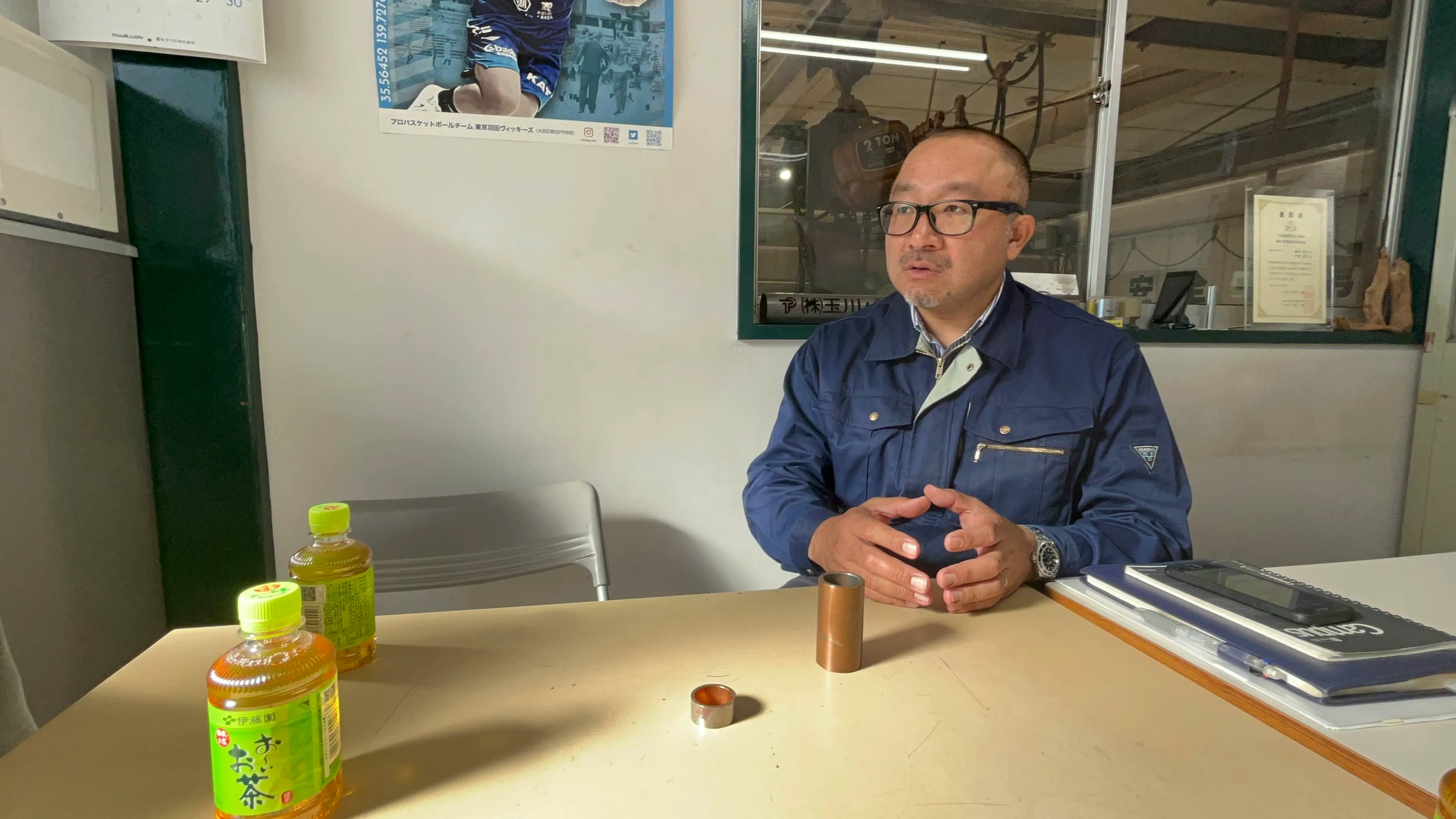
CEO Tamagawa’s previous job was in sales at INAX (now LIXIL). He did not initially plan to take over Tamagawa Pipe, which was run by his predecessor, his father. However, hearing from various people about the excellence of manufacturing technology in Ota Ward, he became interested and decided to take over the family business, a small factory. Without knowing much about the work his predecessor did, and with almost no knowledge, he started working at the factory for about a year before focusing solely on management. His policy is that rather than having multi-skilled personnel, it is better to delegate tasks to those who excel in them, which also helps in nurturing successors.
photo#8 : CEO Tamagawa
The late predecessor was against CEO Tamagawa taking over the factory and intended to close it down in his generation. CEO Tamagawa had no intention of taking over when he was young. However, after moving out of Tokyo and working in another prefecture, he became interested in Ota Ward and the work his father was doing. This led him to decide, “You only live once, so do what you want to do,” and he took over the factory.
Seeing the surrounding factories being replaced by apartments and houses, CEO Tamagawa felt it was a waste. He expressed his desire to revitalize Ota Ward and become a presence that could bring work from outside to Ota Ward and connect it to the future.
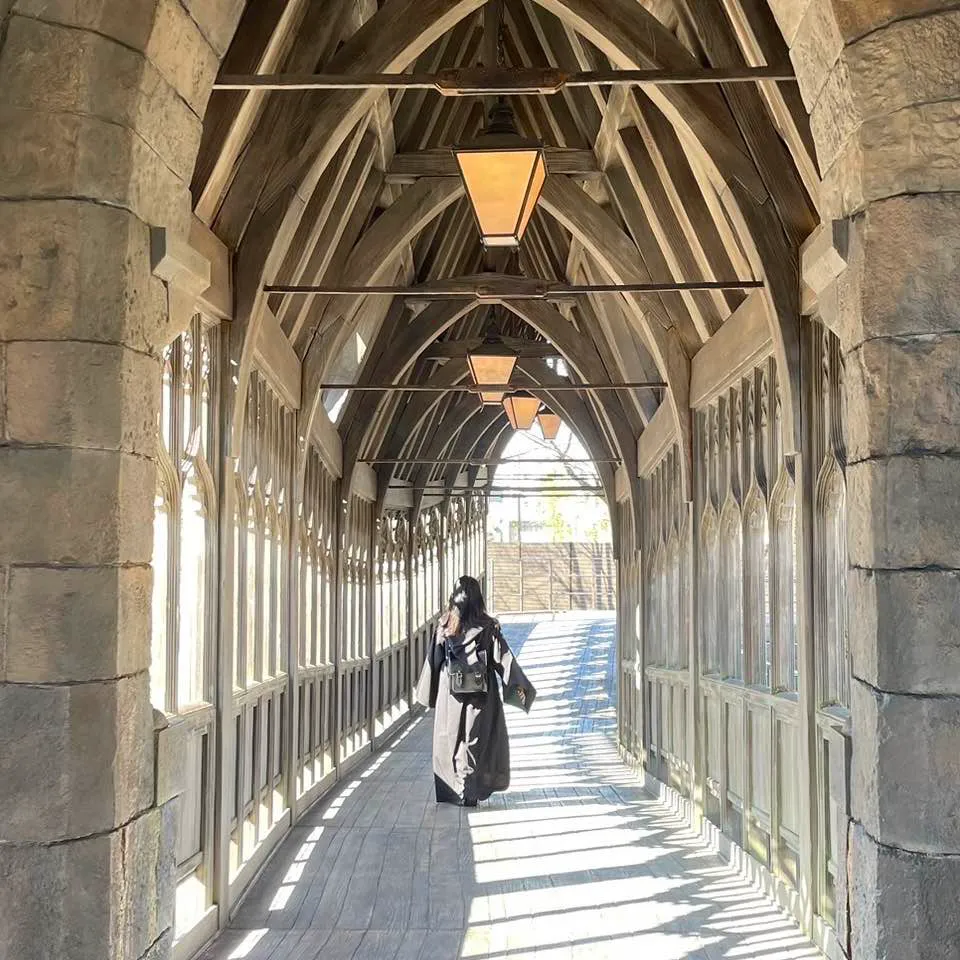
interviewer / writer
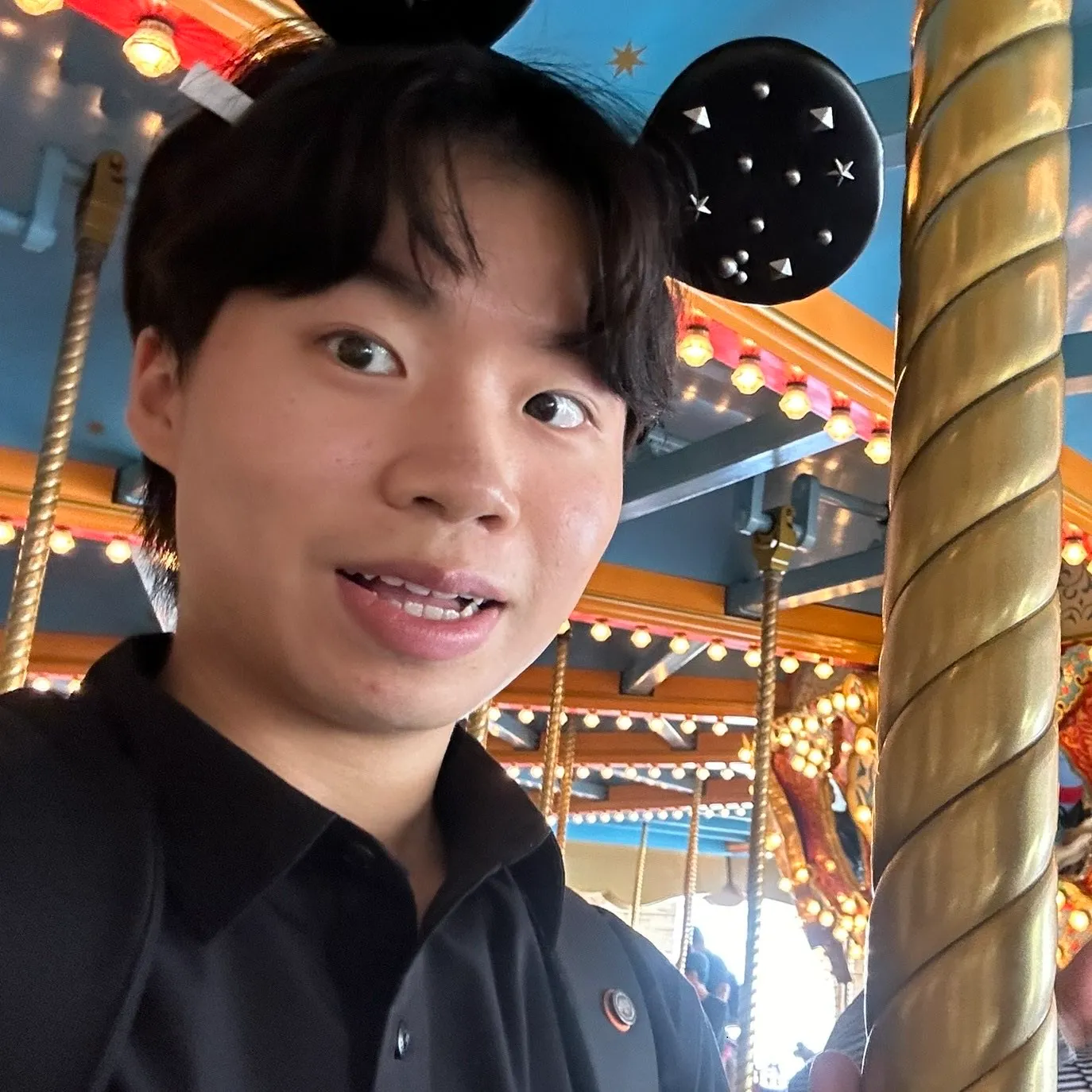
interviewer / writer / web / video
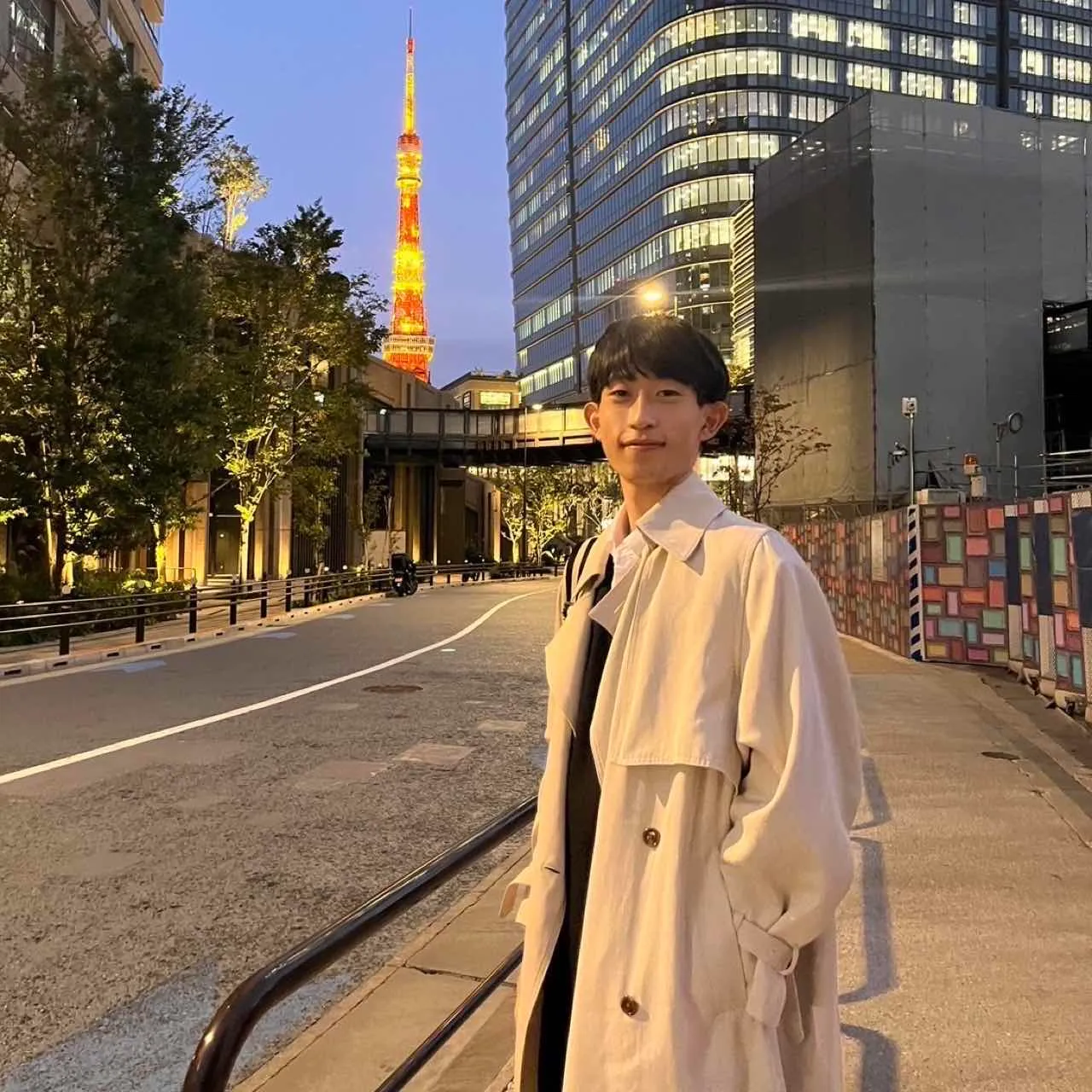
proofreader